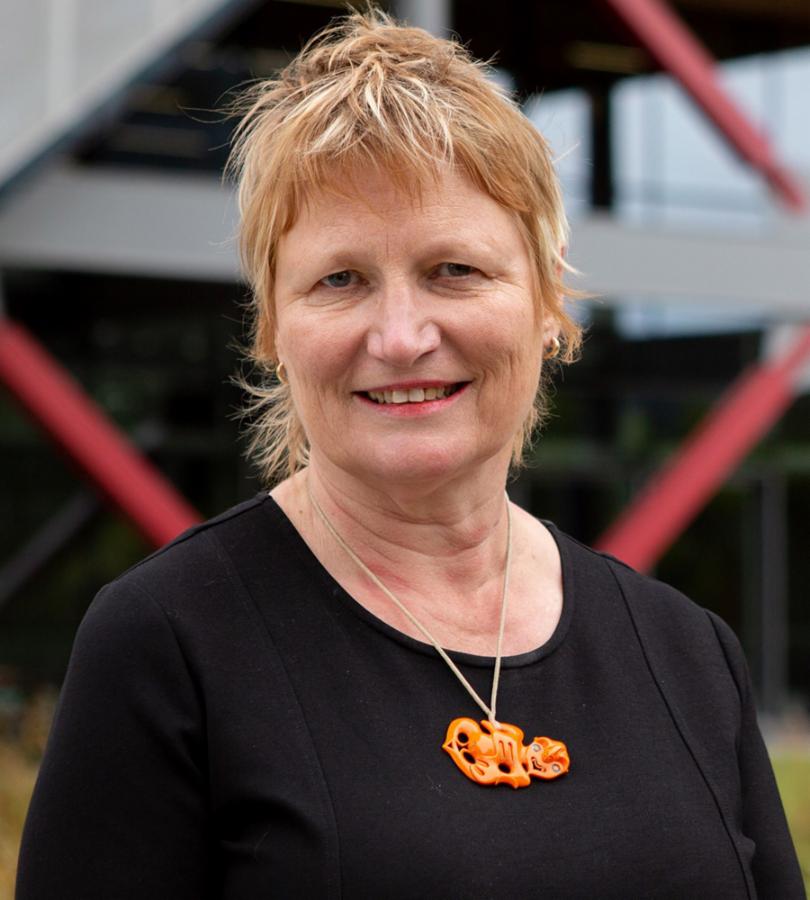The leader of the Linguistic Diversity theme is Professor Jeanette King.
This theme explores bilingualism and multilingualism in Aotearoa, NZ, with a focus on linguistic equity. It investigates issues relating to language attitudes and education in NZ, and conducts research in support of the revitalization of te reo Māori.
Te Kāhui Kaihautū, the Māori reference group, advises on the research projects associated with NZILBB.
The current projects of the Bilingualism theme are:
Project Leader: Jeanette King
Associate Investigators:
- Mary Boyce
- Christine Brown
We know very little about how tamariki are using te reo Māori in immersion schooling situations. This has a massive range of consequences for teaching: from supporting learning in individual classrooms through to the nationwide production of appropriate written material for use in kura. The Tuhinga Māhorahora project is building a corpus of children’s writing in Māori which will allow us to understand children’s written expression in immersion settings and answer questions such as: How do our tamariki use te reo Māori? How does their use of Māori develop over time? How can we support and improve the use of Māori by teachers in classrooms? How can we more accurately and effectively improve curriculum and written material for use in Māori immersion classrooms?
To date the Tuhinga Māhorahora project has collected 1,329 samples of Year 1-8 children’s written Māori from participating immersion schools. The children’s writing has been entered into a database and analysed in order to test ways of providing targeted feedback to participating teachers to improve their teaching practice and use of te reo Māori in classrooms. The children’s writing forms a powerful corpus of written Māori which will be of invaluable benefit nationwide in the production of, and effective use of, written material for school use. The project hopes to continue with data collection from further kura.
The set up phase of this project was supported by seeding funding from the New Zealand Institute of Language, Brain and Behaviour. The project has significant software support through the Institute’s software programmer Robert Fromont and the use of the LaBB-CAT software which facilitates interrogation of the material in the database. We will be able to give accurate information about how children at various ages and with various language backgrounds and environments are using and developing their te reo Māori written skills over time.
A copy of the Tuhinga Māhorahora transcription and tagging protocols manual.
Project leaders:
Una Cunningham
Jeanette King
The Intergenerational Transmission of Minority Languages (ITML) Project is studying the extent to which speakers of minority languages in New Zealand are passing their language on to their children. The phrase ‘minority language’ is used here to refer to languages other than the three official languages of New Zealand: English, Māori and New Zealand Sign Language.
We are planning a number of interrelated projects, including a ‘bilingual teens’ project, which, with funding from NZILBB, focuses on the experiences of parents and their teenage children in situations where intergenerational transmission has been successful. The data sources for the ‘bilingual teen’ ITML project are twofold: recent census data on the number of child speakers and interviews with parents and their minority language speaking teenagers. Information from both sources will allow the ITML project to address the deficits in current knowledge with pamphlets and presentations to parents and relevant professional bodies. The project also aims to set up a website which includes information, resources, advice and encouragement drawn directly from the interviews to encourage parents to raise their children as speakers of their minority languages.
One of the initial motivations for the ITML project was a report from the Office of Ethnic Affairs where it was suggested that migrant families should consider speaking English to their children to improve their level of English. Our concern is that advice such as this may encourage migrant families to abandon intergenerational language transmission without considering the long-term personal and societal benefits of competence in the heritage language. It is also worth noting that in comparison with other jurisdictions there is a dearth of public understanding and knowledge about multilingualism in New Zealand and a lack of information for professionals working with parents and children.
Project Leader: Jeanette King
Associate Investigators:
- James Gruber
- Jen Hay
- Lucy Johnston
This is the data collection phase for a research project investigating differences in verbal and non-verbal behaviour (especially gesture) by monolinguals and bilinguals speaking English and Maori. We are currently making audio and visual recordings of twelve young male New Zealanders in our recording studio. Six participants are monolingual in English and six are Maori/English bilinguals.
In separate recordings, the participants will engage with a Pakeha and a Maori interviewer in a number of tasks including the retelling of stories and telling about positive and negative incidents that occurred in their past and also in the previous week. Bilingual participants will be involved in a third interview with the Maori interviewer in the Maori language. The tasks performed in all sessions will be similar.
Non-verbal cues will be coded to see whether there are differences in the rate and type of gesture used by the monolingual and bilingual participants and when the bilingual participants are using different languages. This data will form the basis of a number of perception experiments to examine whether such things as ethnicity or language being spoken can be reliably determined from the visual signal alone.
Project Leader: Jeanette King
Associate Investigators:
- Jen Hay
- Lucy Johnston
- Margaret Maclagan
Conducted in the HITLab's Vision Space, the aim of this project is to investigate whether there is synchrony between movement and speech among Maori/English bilinguals and whether this differs to that of monolingual New Zealand English speakers.


